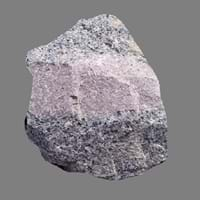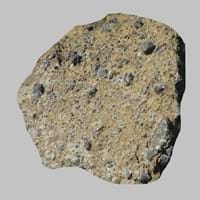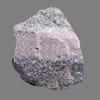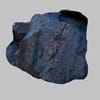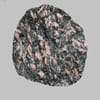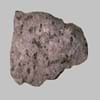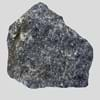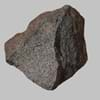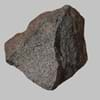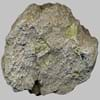Mangerite and Hyaloclastite
Definition
Definition
Mangerite is a plutonic intrusive igneous rock, which is essentially a hypersthene-bearing monzonite
Hyaloclastite is an aggregate of fine, glassy debris formed by the sudden contact of hot, coherent magma and cold water or water-saturated sediment
History
Discoverer
Unknown
Unknown
Etymology
Not Available
From hyalo + -ite
Class
Igneous Rocks
Igneous Rocks
Sub-Class
Durable Rock, Hard Rock
Durable Rock, Soft Rock
Family
Group
Plutonic
Volcanic
Other Categories
Coarse Grained Rock, Fine Grained Rock, Medium Grained Rock, Opaque Rock
Fine Grained Rock, Opaque Rock
Texture
Texture
Phaneritic
Pyroclastic
Color
Black, Brown, Light to Dark Grey, White
Brown, Grey, Yellow
Maintenance
Less
More
Durability
Durable
Durable
Water Resistant
Yes
No
Scratch Resistant
Yes
No
Stain Resistant
Yes
No
Wind Resistant
No
No
Acid Resistant
No
No
Appearance
Shiny
Dull
Uses
Architecture
Interior Uses
Decorative Aggregates, Interior Decoration
Countertops, Decorative Aggregates, Homes, Interior Decoration
Exterior Uses
As Building Stone, As Facing Stone, Paving Stone, Garden Decoration
As Building Stone, As Facing Stone, Paving Stone, Garden Decoration, Office Buildings
Other Architectural Uses
Curbing
Curbing
Industry
Construction Industry
As Dimension Stone, Cement Manufacture, Construction Aggregate, for Road Aggregate
Building houses or walls, Construction Aggregate
Medical Industry
Not Yet Used
Not Yet Used
Antiquity Uses
Artifacts, Monuments, Sculpture
Artifacts, Jewellery, Monuments, Sculpture
Other Uses
Commercial Uses
Cemetery Markers, Creating Artwork
Cemetery Markers, Creating Artwork
Types
Types
Not Available
Welded tuff, Rhyolitic tuff, Basaltic tuff, Trachyte tuff and Andesitic tuff.
Features
Available in lots of colors, Is one of the oldest rock
Always found as volcanic pipes over deep continental crust
Archaeological Significance
Monuments
Used
Used
Famous Monuments
Data Not Available
Data Not Available
Sculpture
Used
Used
Famous Sculptures
Data Not Available
Data Not Available
Pictographs
Not Used
Used
Petroglyphs
Not Used
Used
Figurines
Used
Used
Fossils
Absent
Absent
Formation
Formation
Mangerite is a fine-grained, hard rock which is a type of metasomatite, essentially altered basalt. It forms with or without crystallization, either below the surface as intrusive rocks or on the surface as extrusive rocks.
Hyaloclastite is a type of Igneous rock is formed through the cooling and solidification of lava or magma.
Composition
Mineral Content
Albite, Amphibole, Apatite, Biotite, Feldspar, Hornblade, Ilmenite, Magnetite, Muscovite or Illite, Olivine, Plagioclase, Pyroxene, Quartz, Sulfides, Titanite, Zircon
Calcite, Chlorite
Compound Content
Aluminium Oxide, CaO, Iron(III) Oxide, FeO, Potassium Oxide, MgO, MnO, Sodium Oxide, Phosphorus Pentoxide, Silicon Dioxide, Titanium Dioxide
Hydrogen Sulfide, Sulfur Dioxide
Transformation
Metamorphism
Yes
Yes
Types of Metamorphism
Burial Metamorphism, Cataclastic Metamorphism, Impact Metamorphism
Burial Metamorphism, Cataclastic Metamorphism, Contact Metamorphism, Hydrothermal Metamorphism
Weathering
Yes
Yes
Types of Weathering
Biological Weathering, Chemical Weathering, Mechanical Weathering
Biological Weathering, Chemical Weathering, Mechanical Weathering
Erosion
Yes
Yes
Types of Erosion
Chemical Erosion, Coastal Erosion, Glacier Erosion, Sea Erosion, Water Erosion, Wind Erosion
Chemical Erosion, Coastal Erosion
Properties
Physical Properties
Hardness
6-7
1-2
Grain Size
Medium to Fine Coarse Grained
Fine Grained
Fracture
Not Available
Not Available
Streak
White
Colorless
Porosity
Less Porous
Highly Porous
Luster
Subvitreous to Dull
Dull and Grainy
Compressive Strength
310.00 N/mm2
2
Not Available
Cleavage
Not Available
Not Available
Toughness
Not Available
Not Available
Specific Gravity
2.8-3
Not Available
Transparency
Opaque
Opaque
Density
2.9-2.91 g/cm3
Not Available
Thermal Properties
Specific Heat Capacity
0.92 kJ/Kg K
10
Not Available
Resistance
Heat Resistant, Impact Resistant, Pressure Resistant
Heat Resistant
Reserves
Deposits in Eastern Continents
Asia
China, India, Iran, Saudi Arabia, Sri Lanka, Taiwan, Thailand, Turkey, Vietnam
Russia
Africa
Angola, Egypt, Ethiopia, Madagascar, Namibia, Nigeria, South Africa
South Africa
Europe
Bulgaria, England, Germany, Norway, Romania, Switzerland
Iceland
Others
Not Yet Found
Not Yet Found
Deposits in Western Continents
North America
USA
Canada, USA
South America
Argentina, Bolivia, Brazil, Chile, Colombia, Ecuador, Peru
Brazil, Colombia
Deposits in Oceania Continent
Australia
New South Wales, New Zealand, Queensland, South Australia, Western Australia
Not Yet Found
All about Mangerite and Hyaloclastite Properties
Know all about Mangerite and Hyaloclastite properties here. All properties of rocks are important as they define the type of rock and its application. Mangerite and Hyaloclastite belong to Igneous Rocks.Texture of Mangerite is Phaneritic whereas that of Hyaloclastite is Pyroclastic. Mangerite appears Shiny and Hyaloclastite appears Dull. The luster of Mangerite is subvitreous to dull while that of Hyaloclastite is dull and grainy. Mangerite is available in black, brown, light to dark grey, white colors whereas Hyaloclastite is available in brown, grey, yellow colors. The commercial uses of Mangerite and Hyaloclastite are cemetery markers, creating artwork.
|
||
|
||
|
